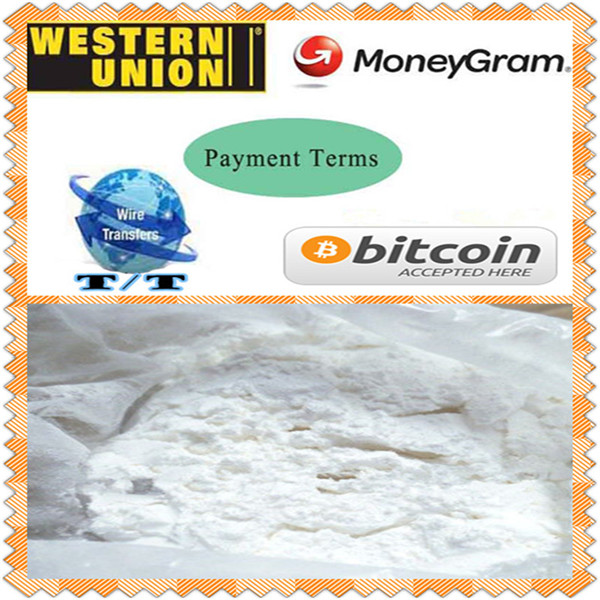| Purity: | 99 |
|---|---|
| Model Number: | 59-46-1 |
| Brand Name: | NJBN STEROID |
| Grade Standard: | Medicine Grade |
| Type: | Vitamins, Amino Acids and Coenzymes |
| Place of Origin: | China (Mainland) |
| EINECS No.: | 200-426-9 |
| MF: | C13H20N2O2 |
| Other Names: | procaine |
| CAS No.: | 59-46-1 |
| Sample: | Free |
| Market: | Worldwide |
Quick Details
Specifications
Factory Direct Procaine 59-46-1 Local Anesthetic
Product Name:
Synonyms: 2-(Diethylamino)ethyl 4-aminobenzoate;2-(Diethylamino)ethyl p-aminobenzoate;2-(diethylamino)ethylp-aminobenzoate;2-diethylaminoethyl4-aminobenzoate;2-Diethylaminoethylester kyseliny p-aminobenzoove;2-diethylaminoethylesterkyselinyp-aminobenzoove;2-diethylaminoethylp-aminobenzoate;4-Aminobenzoic acid diethylaminoethyl ester
CAS: 59-46-1
MF: C13H20N2O2
MW: 236.31
EINECS: 200-426-9
Usage inhibitor of sodium channel
Usage
Procaine is a kind of local anesthetics. With low toxicity but quick and safe effects, procaine is suitable for local anesthesia, applied to the eye, ear, nose, teeth and other department operation, used for infiltration anesthesia, anesthesia and closed therapy supervisor. Procaine is also used in the production of procaine penicillin.
Specification
Description
Procaine is a local anesthetic drug of the amino ester group. It is used primarily to reduce the pain of intramuscular injection of penicillin, and it is also used in dentistry. Owing to the ubiquity of the trade name Novocain, in some regions procaine is referred to generically as Procaine. It acts mainly by being a sodium channel blocker.Today it is used therapeutically in some countries due to its sympatholytic, anti-inflammatory, perfusion enhancing, and mood enhancing effects.
Procaine was first synthesized in 1905, shortly after amylocaine. It was created by the German chemist Alfred Einhorn who gave the chemical the trade name Procaine, from the Latin nov- (meaning new) and -caine, a common ending for alkaloids used as anesthetics. It was introduced into medical use by surgeon Heinrich Braun. Prior to the discovery of amylocaine and procaine, was the most commonly used local anesthetic.[citation needed] Einhorn wished his new discovery to be used for amputations, but surgeons preferred general anesthetic. Dentists, however, found it very useful. Einhorn was displeased by this[why?] and spent many years touring dental schools to advise them not to use it.

Product Name:
Synonyms: 2-(Diethylamino)ethyl 4-aminobenzoate;2-(Diethylamino)ethyl p-aminobenzoate;2-(diethylamino)ethylp-aminobenzoate;2-diethylaminoethyl4-aminobenzoate;2-Diethylaminoethylester kyseliny p-aminobenzoove;2-diethylaminoethylesterkyselinyp-aminobenzoove;2-diethylaminoethylp-aminobenzoate;4-Aminobenzoic acid diethylaminoethyl ester
CAS: 59-46-1
MF: C13H20N2O2
MW: 236.31
EINECS: 200-426-9
Usage inhibitor of sodium channel
Usage
Procaine is a kind of local anesthetics. With low toxicity but quick and safe effects, procaine is suitable for local anesthesia, applied to the eye, ear, nose, teeth and other department operation, used for infiltration anesthesia, anesthesia and closed therapy supervisor. Procaine is also used in the production of procaine penicillin.
Specification
|
Test Items |
Specification | Test Results |
| Appearance | White crystals or a white crystalline powder | Conform |
| Identification | A\B\E. It appears positive reaction | |
| Melting point | 154degree~158degree | 154degree~157degree |
| Acidity | PH 5.0~6.5 | PH=5.9 |
| Appearance of solution | Clear and colourless | Conform |
| Loss on drying | ≤0.5% | 0.07% |
| Heavy metals | ≤0.0005% | Conform |
| Related substances | ≤0.05% | Conform |
| Sulphated ash | ≤0.1% | 0.05% |
| Assay ( on dry basis ) | 99.0-101.0% | 99.87% |
| Conclusion | Conform to BP2005 | |
Description
Procaine is a local anesthetic drug of the amino ester group. It is used primarily to reduce the pain of intramuscular injection of penicillin, and it is also used in dentistry. Owing to the ubiquity of the trade name Novocain, in some regions procaine is referred to generically as Procaine. It acts mainly by being a sodium channel blocker.Today it is used therapeutically in some countries due to its sympatholytic, anti-inflammatory, perfusion enhancing, and mood enhancing effects.
Procaine was first synthesized in 1905, shortly after amylocaine. It was created by the German chemist Alfred Einhorn who gave the chemical the trade name Procaine, from the Latin nov- (meaning new) and -caine, a common ending for alkaloids used as anesthetics. It was introduced into medical use by surgeon Heinrich Braun. Prior to the discovery of amylocaine and procaine, was the most commonly used local anesthetic.[citation needed] Einhorn wished his new discovery to be used for amputations, but surgeons preferred general anesthetic. Dentists, however, found it very useful. Einhorn was displeased by this[why?] and spent many years touring dental schools to advise them not to use it.




